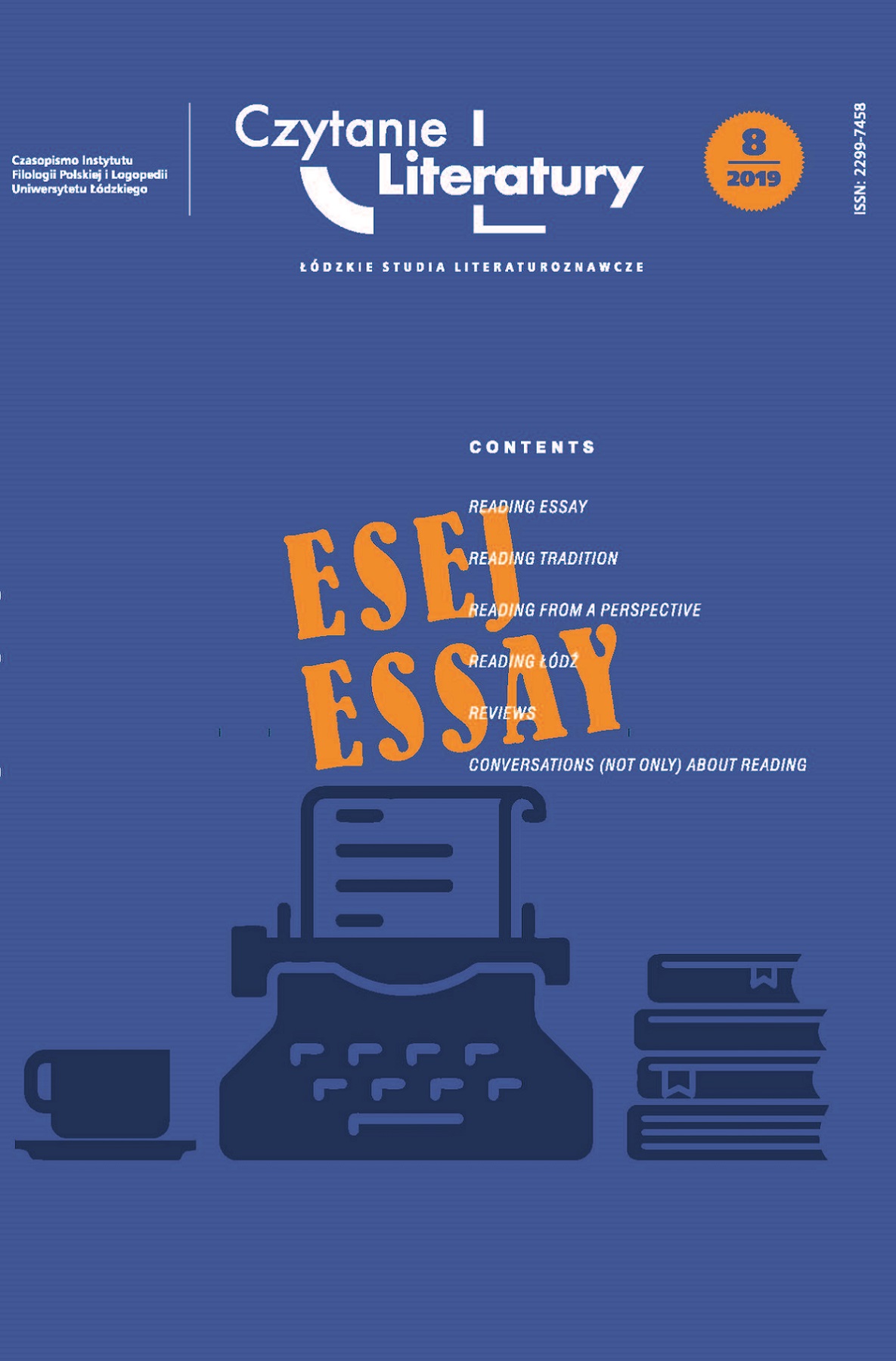Black Love: On the Colours of Feelings in “Confiteor” by Antoni Szandlerowski
DOI:
https://doi.org/10.18778/2299-7458.08.05Keywords:
Antoni Szandlerowski, Confiteor, symbolism, epistolography, black colouristicsAbstract
The imagination of Antoni Szandlerowski in his collection of letters to Helena Beatus (Confiteor), his beloved one, is dominated by black. The aim of this article is to show that this colour plays a major role in Confiteor therefore it is used be the author most of the times. When he writes about how pure and beautiful Helena Beatus is, he uses metaphors such as: black dove, black iris, dark cloud, dark corridor. It shows how pessimistic about the future and how guilty about the love he felt Antoni Szandlerowski was. The internal conflict was caused by the will to fulfil as a lover and the duty to continue priestly services. Antoni Szandlerowski is full of doubts. He misses Helena Beatus and feels that he cannot be happy without her. On the other hand, he knows that they cannot make their desire to live side by side real. Since the world is a place of pain and misery where the love cannot thrive due to social norms, lovers can bind together only after death. This way of thinking led Szandlerowski to many neurological disorders, caused nightmares and a painful impression that the whole world around fades away. Szandlerowski uses symbols such as a black dove and a black iris to describe his beloved one and to show the dichotomy of his perception. Therefore love is the source of all the pain and suffering for him.
Downloads
References
Abramowska J., Rehabilitacja alegorii, [in:] J. Abramowska, Alegoria, Gdańsk 2003.
Google Scholar
Bachelard G., Zmarłe wody w marzenia Edgara Poe, transl. A. Tatarkiewicz, [in:] G. Bachelard, Wyobraźnia poetycka. Wybór pism, Warszawa 1975.
Google Scholar
Baudelaire C., The Flowers of Evil, transl. R. Howard, Londyn 1987.
Google Scholar
Byliński K., Literackie przejawy modernizmu katolickiego w Polsce. O twórczości Franciszka Statecznego, Antoniego Szandlerowskiego i Izydora Wysłoucha, Gdańsk 1994.
Google Scholar
Dąbrowska A., Symbolika barw i światła w “Hymnach” Jana Kasprowicza, Bydgoszcz 2002.
Google Scholar
Dramat biblijny Młodej Polski, ed. S. Kruk, Wrocław 1990.
Google Scholar
Eliade M., Sacrum, mit, historia. Wybór esejów, 3rd edition, transl. A. Tatarkiewicz, selection M. Czerwiński, Warszawa 1993.
Google Scholar
Gadamer H.G., Symbol i alegoria, [in:] Symbole i symbolika, transl. M. Łukasiewicz, selection and introduction: M. Głowiński, Warszawa 1990, pp. 98-106.
Google Scholar
Jakiel E., Ks. Antoniego Szandlerowskiego literackie uobecnienia casus conscientiae, [in:] Etyka i literatura. Pisarze polscy lat 1963-1918 w poszukiwaniu wzorów życia i sztuki, eds. E. Ihnatowicz, E. Paczoska, Warszawa 2006.
Google Scholar
Kopaliński W., Słownik symboli, Warszawa 1990.
Google Scholar
Literatura niewyczerpana. W kręgu mniej znanych twórców polskiej literatury lat 1863-1914, ed. K. Fiołek, Kraków 2014.
Google Scholar
Podraza-Kwiatkowska M., Symbolizm i symbolika w poezji Młodej Polski, Kraków 1994.
Google Scholar
Ricoeur P., Symbolika zła, transl. S. Cichowicz, Warszawa 1986.
Google Scholar
Samborska-Kukuć D., Jak rekonstruować biografię i jak opisać twórczość XIX-wiecznego pisarza minorum gentium? (Metodologia, źródła, struktury narracji). Skrypt akademicki, Łódź 2012.
Google Scholar
Szandlerowski A., Pisma Antoniego Szandlerowskiego. Confiteor, 2nd edition, Warszawa 1912.
Google Scholar
Todorov T., Teorie symbolu, transl. T. Stróżyński, Gdańsk 2011.
Google Scholar
Walas T., Dekadentyzm wśród prądów epoki, “Pamiętnik Literacki” 1977, no. 68(1).
Google Scholar
Walas T., Ku otchłani. Dekadentyzm w literaturze polskiej 1890-1905, Kraków 1896.
Google Scholar
Witosz B., Kobieta w literaturze. Tekstowe wizualizacje od fin de siècle’u do końca XX wieku, Katowice 2001.
Google Scholar
Downloads
Published
How to Cite
Issue
Section
License

This work is licensed under a Creative Commons Attribution-NonCommercial-NoDerivatives 4.0 International License.










